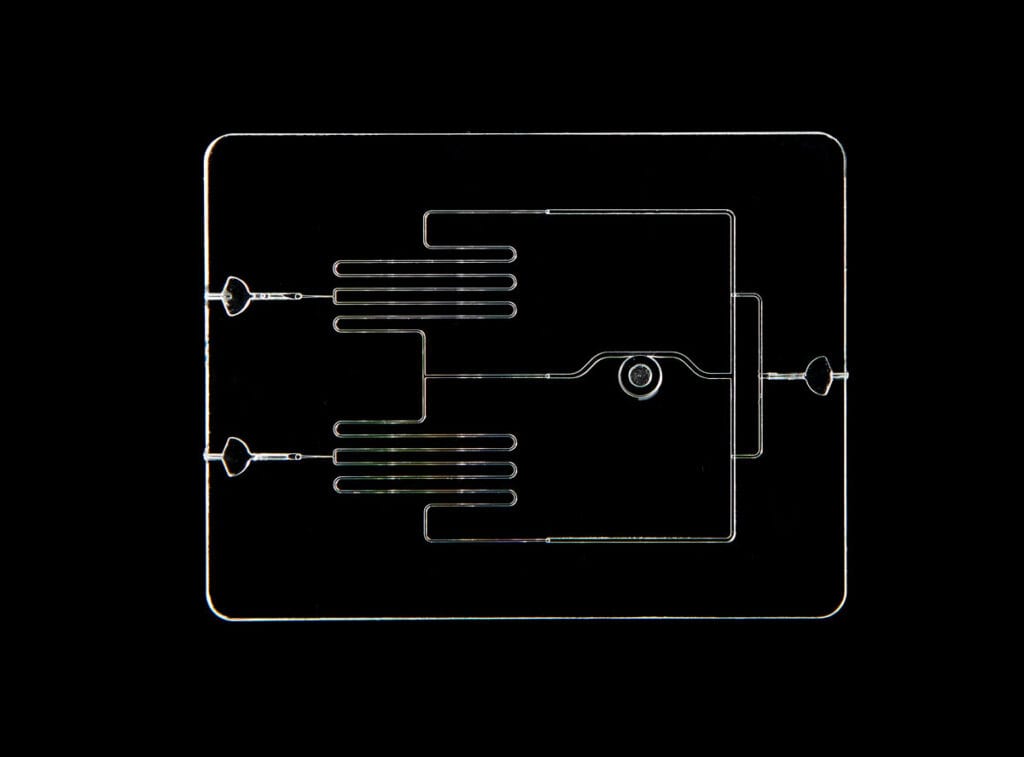We have previously discussed in-depth at how microfluidics work in various applications. In this post, we’ll cover why microfluidics and microfluidic devices are on the rise and seeing more use across multiple industries, mainly in the healthcare and medicine industries. Let’s take a look at the rise of microfluidics and how this advanced microfabrication technique is taking the world by storm.
What is Microfluidics?
Microfluidics is an evolving technology that enables scientists and engineers to perform molecular biology, including DNA and RNA sequencing, PCR, and even whole transcriptome analysis more rapidly. The major benefit of using a microfluidic device for these analyses is the lower cost compared to conventional technologies. Microfluidics technology leverages the manufacturing process to produce high volumes of highly engineered devices capable of performing the chemical, biological, and separation reactions required for microbiology research.

Why are Microfluidic Devices Rising in Popularity and Use?
As the name implies, microfluidics enables researches to conduct, analyze, and repeat experiments at a molecular level at scales not previously available. By enabling the miniaturization of complex operations, experiments normally conducted at the scale of liters can now be performed at the scale of microliters…or less. This results in a reduction of volume by over 600%!
Because of this reduction in scale, costs can be saved, as the mniaturization of experiments clearly reduces the volume of necessary, often expensive, reagents. Furthermore, microfluidics allows for designs that eliminate the performance limitations of conventional equipment such as shake flasks and wells.
A good example of this is the standard PCR process for DNA replication which entails performing a series of reaction, heating, cooling, and mixing operations. Microfluidics with characteristic mixing lengths on the order of micrometers reduce heating and cooling times to seconds from minutes, resulting in a significantly higher throughput for the microfluidic device over the shake flask.
Flexibility of Microfluidics
Another aspect of microfluidics that is appealing to researchers is their flexibility. Remarkably, using only a few fundamental geometric shapes, such as pillars, channels, holes, and wells, it is possible to design as variety of reaction, separation, and/or purification operations. This makes microfluidic technology amenable to both synthetic and modular design strategies. Microfluidic designs can be easily and fully customized to achieve objectives such as throughput and purity.
Scale
Finally, production of microfluidic devices can leverage economies of scale. They do this by integrating high-throughput replication and bonding technologies such as hot embossing and micro-injection molding with thermal and laser bonding technologies. Once again, this helps alleviate costs and allows for a microfluidic manufacturer to create a large number of devices to meet demand.
Citrogene: Microfluidic Device Engineer
Microfluidics has a multitude of applications across a wide variety of industries. When it comes to producing the ideal microfluidic device for your specific needs, there’s only one microfluidic partner to consider: Citrogene. Our proprietary process allows us to create precise, customized, state-of-the-art microfluidic devices based on your needs, all produced in glass. Contact us today to learn more.
